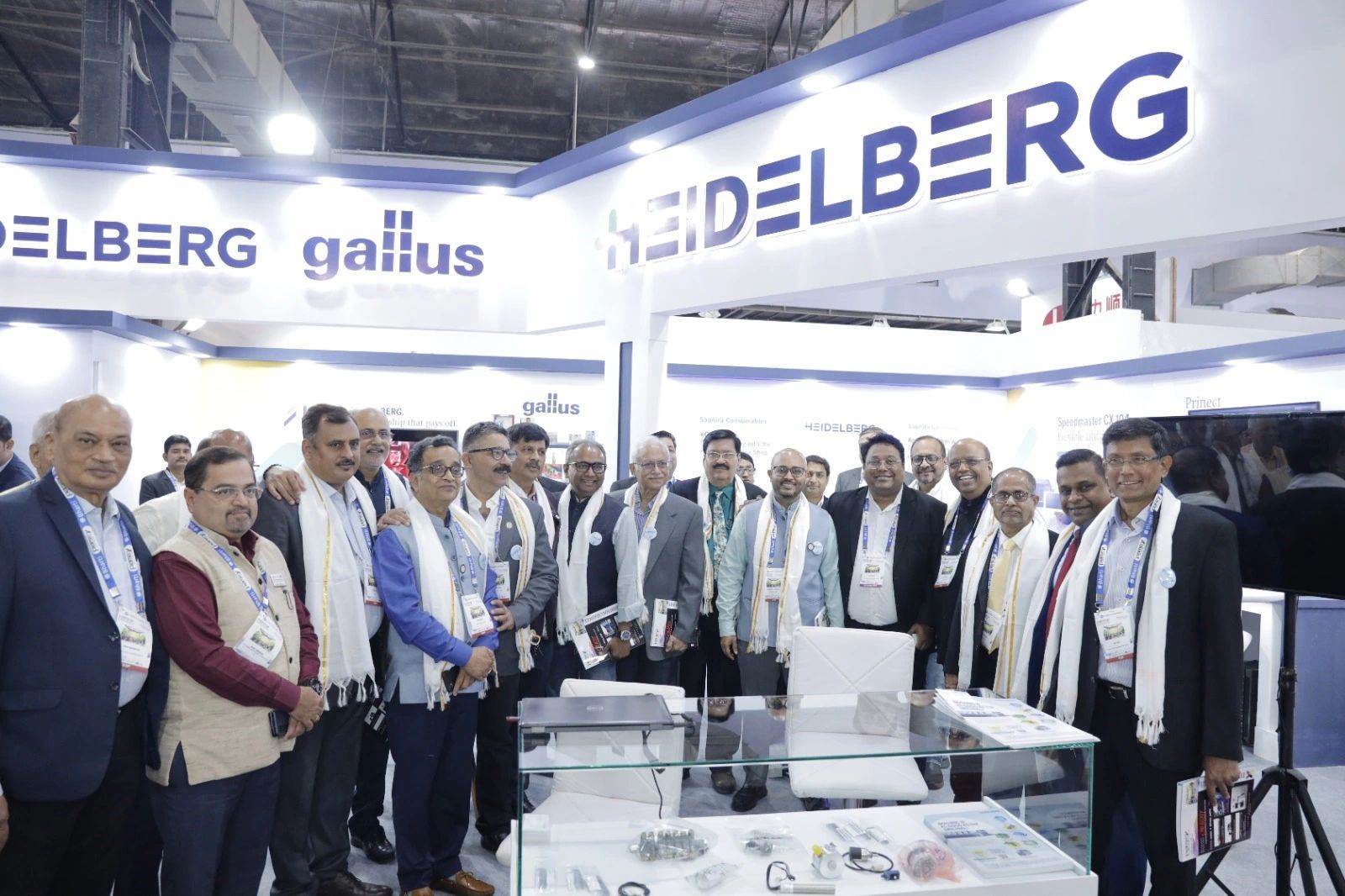Heidelberg’s focus is on innovators, who play with different, complex substrates
At Pamex 2024, Heidelberg is showcasing solutions for sheetfed offset, including consumables like Saphira basket and flexo. Heidelberg is also showcasing the Prinect workflow solution and Heidelberg spare parts.
09 Feb 2024 | By Noel D'Cunha
According to the PrintWeek market estimate, Heidelberg has installed over 50 units of sheetfed presses till January 2024 and will close the 2023-2024 with over 60 units. Plus, a good number of Gallus flexo presses. However, it may be mentioned here that the units of sheetfed presses fall in the high-range price tag, and so do the Gallus flexo presses.
When PrintWeek asked Samir Patkar, president of Heidelberg India, what challenges he thinks the Indian print industry faces, particularly the label segment, when it comes to producing high-quality prints with complex designs and colours, he says, the use of foil printing and multi-layered designs is becoming more popular.
Patkar explains, “But this requires careful attention to detail and compliance with industry standards. In particular, there is a need for clear and legible font sizes and definitions, as well as the ability to include more information on labels through the use of vertical pages and booklets. Overall, the goal is to achieve 100% defect detection and ensure that the finished product meets the requirements of clients, including those in the pharmaceutical and cosmetics industries.”

According to Patkar, Heidelberg segments the print companies into a pyramid with three parts. At the top are those dealing with high-quality, embellished print requirements, offering solutions to brand owners in India to compete with similar companies in the US or the Western world. At the bottom are those serving a large, price-conscious market in India that doesn't have the capacity to invest in good quality equipment. In between are those who want to grow.
Patkar says, “We focus on the innovators who play with different, complex substrates, including those that are thinner and more recyclable. However, these substrates are difficult to convert on the press, requiring good registration and print quality.”
So, where does Patkar envisage the next wave of investments in 2024? He says the label printing industry in India is undergoing a significant change in terms of volume, but it is increasingly price-sensitive. “This creates a disconnect between the value that should be offered to the customers and the volume being produced.”
Patkar adds, “In the past when we first began working in the industry with flexo machines, it was a niche market. Offset was the most mature technology, and sheetfed offset presses were widely used. Despite this, you were able to create a successful business printing labels, including beer, food, and other product labels. Now, the industry seems to be struggling with keeping prices low while maintaining quality.”

Investing in digital media may result in higher profits but will only be accessible to those at the top. Those who have not yet entered the digital space may find it to be a potential solution that complements their existing business.
Patkar foresees a lot of disruption in this industry as the top players invest in better and more advanced technology and are pushed to move faster towards digitalisation.
Will it be a standalone or digital as a hybrid model? “It depends,” says Patkar. “A label printer who predominantly uses paper-based substrates may benefit from the use of a standalone solution, while those printers in the West may prefer to opt for a hybrid approach to avoid over-engineering. In India, however, many printers tend to want everything, regardless of whether it is necessary, which poses a significant challenge.”
Patkar cites examples. “One of the primary benefits of going digital is to save time, meaning that printers may not be comfortable with printing standalone and then converting offline. If a printer is working with a lot of films, a flexo printing unit may be necessary in their digital solution to save costs. These decisions are dependent on individual requirements and must be considered on a need-based basis. Once the option becomes available, Indian printers will opt for a hybrid solution, given their focus on security.”












 See All
See All